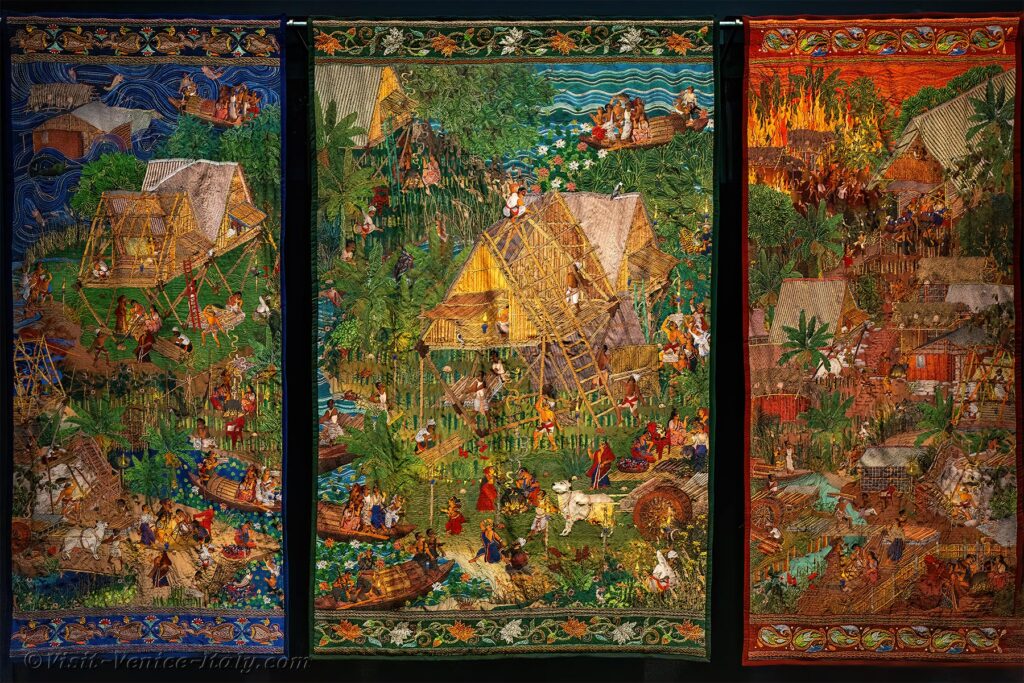
In the Biennale, one artwork that stood out was “Bengal Song” by Arinjoy Sen, which effectively connected our classroom learnings to the pieces of artwork on display. The story of”Bengal Song” revolves around the power of community and advancements in architectural technology to transform otherwise uninhabitable places into thriving environments, connecting these parallels to the construction of Venice. On the left-hand side of the artwork, the depiction showcases native people creating portable housing in the flood lands of India. These houses feature an elevated ground level, keeping them out of reach of floodwaters. However, the structures are designed to be easily assembled and disassembled, allowing the tribe to relocate to higher ground during flood season. On the right side of the artwork, a refugee tribe is depicted adapting their buildings to a similar style as seen on the left side. This adaptation enables their structures to be easily assembled and disassembled, offering protection against high floodwaters. The centerpiece of the artwork symbolizes the combination of both technologies, resulting in something greater and more efficient. The centerpiece portrays more intricate structures across the canvas, emphasizing the power of community and the ability to share and improve ideas among individuals. Observing this piece made me think of one of our class discussions about what sets humans apart from other animals. Our unique ability to communicate, work in groups, and pass down past knowledge allows us to continuously enhance and adapt ideas over generations. This capacity for improvement makes us more efficient and enables us to inhabit areas that may have previously been considered uninhabitable. Overall, “Bengal Song” serves as a testament to the strength of community, the transformative powers of shared knowledge, and our ability to innovate and thrive even in challenging circumstances.
